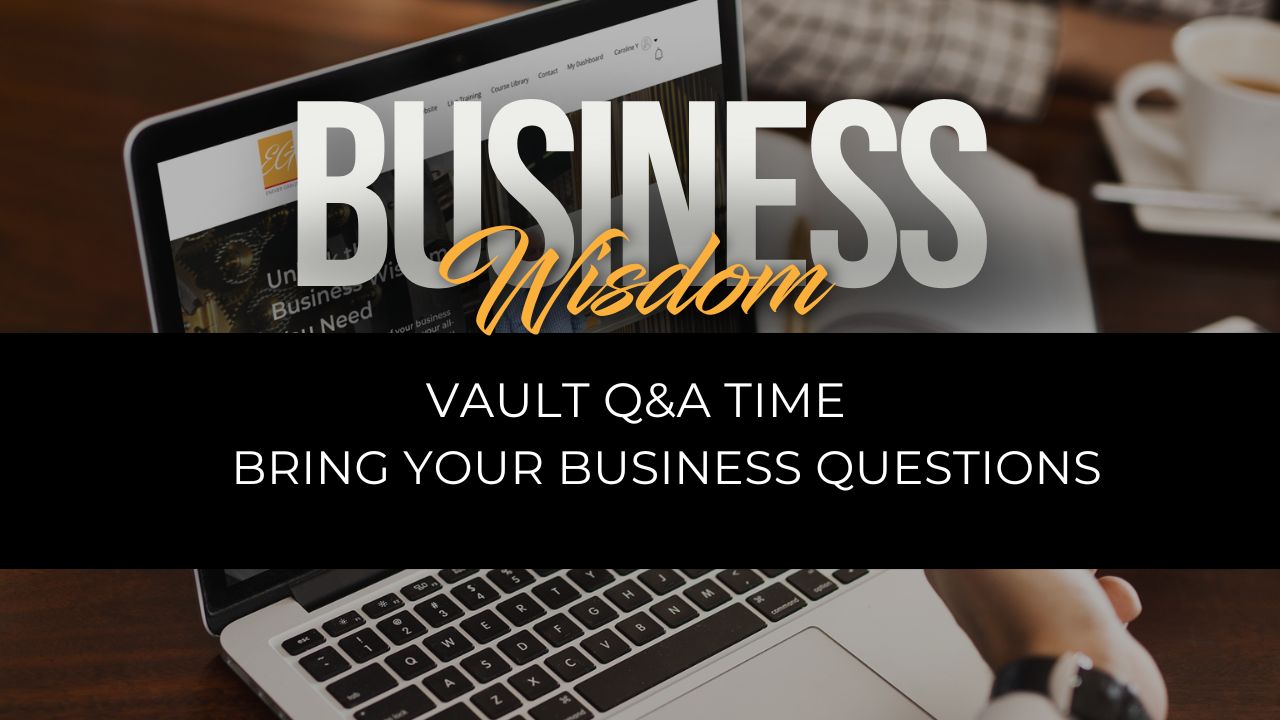As much as every business would like to believe they offer service that’s second to none or products that more than meet their consumers’ expectations, every now and then even the best businesses will receive a negative review on social media.
The truth is you can’t please all the people all the time, but it’s what you do with that review or feedback that counts, and truth be told when handled well, negative reviews create opportunity.

Marketing is a two-way street
Marketing should never be a one-way street. It’s about building brand awareness through openness and transparency that enables your customers to engage with your brand.
This two-way transaction opens opportunity for business through feedback, customer insight and word of mouth. But it’s no secret, when you put yourself out there to be assessed by the public, sometimes that feedback will be anything but what you were hoping to hear.
When that negative response or review pops up on social media or the comments in your website, it can be tempting to hit the doldrums or even sweep poor feedback under the rug.
But, with every situation comes opportunity, and in marketing it’s no different. So, here’s an insight into turning the negative on its head, and why bad reviews, handled well, might even boost your business.
When the oncoming traffic is rough
Bill Gates once famously noted: “Your most unhappy customers are your greatest source of learning”.
Every customer has the right to have a point of view. If that viewpoint is negative, it’s your response that matters above all else.
When handling negative reviews, ask yourself:
- Is there truth in their comments?
- Is there an opportunity to learn
- Is there something we could be doing better?
Then set about assuring the customer, their comments are heard.
If your business has negative reviews, address them quickly and proactively on the same media channel they were made in a bid to remedy the problem or make up for the poor experience.
In some cases that might involve an open apology, in others it might see you explain the situation, or in others still, you might use humour to disarm the situation, or note you have taken their comments on board.
Responding to a negative review in a timely manner shows you care, are open to feedback, are looking to do better and value their experience as a customer.
Importantly, acknowledging and responding to negative reviews indicates you are fallible, yet responsive, transparent and authentic. And, in practice that works to build trust.
As former British Airways vice-president Donald Porter once noted: “Customers don’t expect you to be perfect. They do expect you to fix things when they go wrong”.
Openness and transparency
A recent study by Label Insight found up to 94 per cent of consumers surveyed said they were more likely to be loyal to a brand that offers transparency, while 73 per cent said they were willing to pay more for a product that offers complete transparency.
Handling and including negative reviews in your marketing are all part of fostering this ethos.
In a busy digital world where content, self-promotion and advertising abounds, noting and dealing with negative publicity offers the opportunity to illustrate your brand’s authenticity.
It allows your customer a greater insight into who you are, what you believe in and how you really feel about your valued customer.
And addressing negative feedback is critical when you consider:
- When making a purchase, 92 per cent of consumers trust recommendations from friends and family over all forms of advertising. In fact, they trust their friends and family nine times more than they trust advertising. (Source: Salesforce)
- Half of all adults are now routinely checking online reviews before making a purchasing decision. (source: Pew Research Center)
- 78 per cent of people who read online reviews find them reliable (Source ReportLinker).
- 88 per cent of consumers trust online review sites as much as personal recommendations (Source BrightLocal. Additionally, 69 per cent of consumers like to read product reviews written by trusted experts before making a purchase.
The positive of negative reviews in an age of distrust
We previously mentioned that negative reviews can actually work to build trust, transparency and openness by illustrating that your brand isn’t just about the hype, it’s also about the customer and their reality.
And in an age where the message of brands is viewed with more skepticism than ever before, this accountability and accurate reflection of a brand is critical.
Adweek explains, in many ways the free flow of information offered by the internet has created an “age of distrust”.
“Fake news infiltrates the media daily. It inundates social media feeds and tempts with the most appealing of clickbait headlines. For marketing’s underbelly, it has been a gold mine, but it has come at the cost of trust and consumer confidence.
“Never before has the general public been so skeptical of absolutely everything, let alone marketing and advertising. Edelman’s 2017 Trust Barometer reported the largest-ever drop in trust across the institutions of government, business, media and NGOs.”
So how do you go about addressing this level of skepticism? By being open, honest and accountable about what you do through the information you provide.
Entrepreneur explains: “Transparency in business requires entrepreneurs to remain open and informative about key points of information, including their business’s goals, history, performance and operations.”
And yes, that means including negative reviews in your feedback, and actively addressing them.
But to do that you need to know what’s being said about you.
What’s being said about you?
Handling negative feedback requires you to be vigilant and responsive. You need to monitor media channels for comments about your brand and address them in a timely, productive manner.
Key tools for monitoring include:
Google Alerts
Google Alerts allows you to set up keyword monitoring for either words or phrases that relate to your brand or your area of interest. You can get as-it-happens (as Google scans) alert emails, or you can get email messages sent once a day or once a week.
To set up Google alerts:
- Point your browser at Google.com/alerts.
- Make sure you’re logged into a Google account. You’ll need one for this service.
- In the big blue box at the top of the page, enter the brand or phrase you’re looking for.
- Click Create Alert or Show Options.
- Choose how often. You can choose to get updates as soon as Google finds new mentions or have them batched to once a day or once a week. Your mailbox flow will dictate your choice here.
- Choose source. You can limit your source to news or blogs or discussions (and more), or set it to automatic. Google determines if a mention is relevant and useful and sends it along.
- You can also limit by language and region.
Social media monitoring
It’s important you regularly check in on your own social media accounts to see exactly what’s going on, but there are some excellent further tools available to ascertain when and where you’re mentioned outside your own digital real estate.
These include:
- eClincher: eClincher allows you to monitor social media mentions, conversations and hashtags of your own brand and products, or even your competitors’.
You can create and save your own custom search feeds with specific search keywords to find new stories, keep an eye on competitors, find new leads, monitor brand mentions and set up RSS feeds to easily find and share relevant articles
- Zoho Social: Zoho Social also offers a real-time social media monitoring tool for your business.
You can monitor keywords and hashtags, discover new leads, and listen to what’s being said about your brand across social networks.
- Friends+Me: Friends+Me is probably the least known, but it’s surprisingly popular, allowing you to monitor mentions across Google and social media.
A ripe example of turning a negative into a positive
In 2014, Woolworths wasted no time turning a seemingly innocuous complaint into a PR goldmine during a scenario that went a little like this…
It all started with a Woolworths’ customer taking to Facebook to voice his discontent with their avocado offering.
A user named Ryan Goodall wrote:
Dear Woolworths,
Here I was having a good time with my mates, just sitting around eating some steak and brocoli (which i got from you guys), when i decided oh i know what would turn my average everyday meal into a extra creamy mouthful of meaty sensation (no homo). A perfectly ripen avocado! As i cut into the strange shaped food my eyes quickly changed from having a certain spark of hope and desire in them, into holding nothing but disappointment and despair.
As you can see from the picture below, the avocados i bought tonight are not really living up to the whole ‘Woolworths the fresh food people’ idea. I am not calling you guys liars but if you guys have a slogan maybe you should live upto it.
P.s. I want you to know I am not angry, I am just disappointed.
The Woolworths team wasted no time if posting the following response:
 Ryan the Disappointment is more than we can bare! Private message us your number and we will hook a brother up.
Ryan the Disappointment is more than we can bare! Private message us your number and we will hook a brother up.
And then…
Rather than an over-ripened avocado putting a dent in the Fresh Food People’s image, the team handling Woolworths’ social media accounts were applauded for their prompt and funny response.
They addressed the problem, quickly solved it and used appropriate humour that then saw their handling of the ‘problem’ go viral and win them a legion of fans.
Some consumers even went as far as creating humorous memes in honour of Woolworths’ tact in dealing with the complaint. The initial post received close to 35,000 likes and over 2500 shares.

Top tips for handling negative reviews:
Monitor – Monitor your accounts and respond in a timely manner to negative feedback. Response ensures your consumers feel “valued” and “heard”.
Act quickly – The faster the response the better. Set up alerts, keep an eye on website comments and monitor your social media accounts for commentary. Respond to both the good and the bad quickly. This indicates you value and respect the opinions of your clientele.
Don’t hide or delete – Don’t attempt to hide negative reviews or sweep them under the carpet – consumers understand opinions vary. They’re often more interested in your response than the initial comment.
Open and Transparent – Publishing and handling negative comments creates openness and transparency. It illustrates your company’s ethos and shows it is real, fallible, and when handled correctly, willing to learn. Openness and transparency also create empathy and trust from the consumer.
If complex, get direct – If the issue is complex or specific, consider taking it out of the spotlight, indicating you’d like to speak directly with the customer via private message or phone call.
Remain respectful – No matter how outlandish the comment or overly negative the review, getting angry, sarcastic or narky only damages your reputation.
Use the force – If the issue is a major fail, or crops up regularly, own the mistake and then actively publicise what you intend to do as part of your content strategy and consumer engagement.
Respond carefully – Review your response carefully, considering it from all angles and ensuring it is warm, fair, accurate and correctly reflects the tone of your business.









